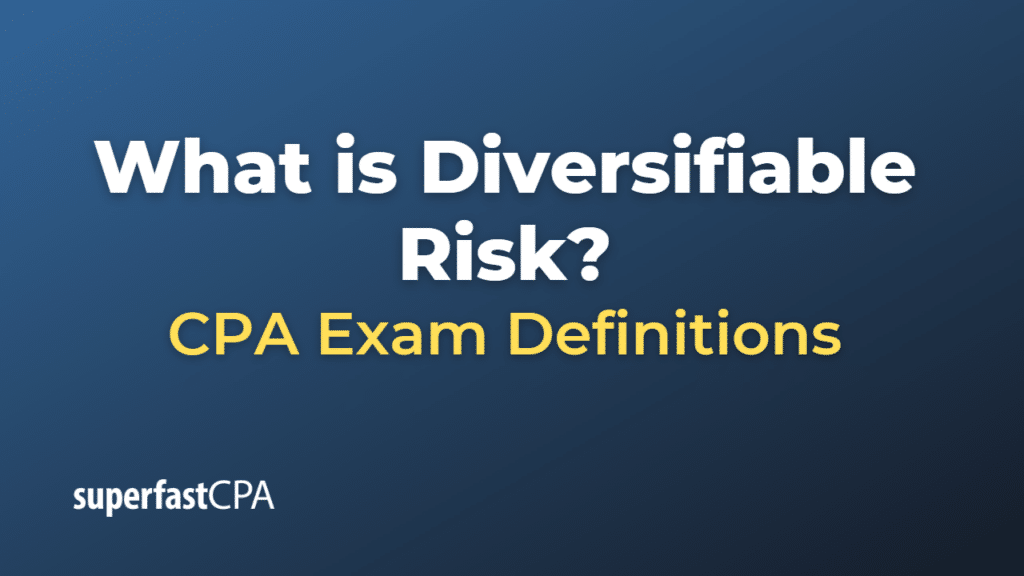Diversifiable Risk
Diversifiable risk, also known as unsystematic risk, unique risk, or idiosyncratic risk, refers to the part of an investment’s risk that is specific to that investment or to a small number of investments. It’s associated with factors that are unique to a particular company or industry, such as management performance, labor strikes, production issues, or sector-specific issues.
Diversifiable risk can be reduced or mitigated through the process of diversification – that is, by investing in a variety of assets or asset classes that are not perfectly correlated. For instance, if you hold stocks in multiple industries, a problem in one industry (like a strike affecting the auto industry) might hurt the stocks in that industry, but it likely won’t impact stocks in different industries (like technology or healthcare).
In other words, by spreading investments across various types of assets, the investor can often reduce the potential for a single event to negatively affect their overall portfolio. Diversifiable risk contrasts with non-diversifiable risk (or systematic risk), which affects all companies and cannot be reduced through diversification. Systematic risk includes factors like inflation rates, exchange rates, political instability, changes in interest rates, and macroeconomic factors.
Example of Diversifiable Risk
Suppose you are an investor who has all your investment in the stock of a single company, let’s call it Tech Titan Inc., a technology company. In this scenario, your investment portfolio is exposed to a high level of diversifiable risk. Why? Because any negative event specific to Tech Titan Inc. – such as poor earnings results, the departure of a key executive, a product failure, a lawsuit against the company, etc. – could significantly decrease the value of its stock and, consequently, the value of your portfolio.
Now let’s say that instead of investing all your money in Tech Titan Inc., you spread your investment across 20 different companies from various industries – a few technology companies, some healthcare companies, some consumer goods companies, a couple of utilities, and so forth. Now your portfolio is much more diversified.
In this diversified portfolio, a negative event at any one company (like Tech Titan Inc.) would likely have a much smaller impact on your overall portfolio. That’s because such an event is unlikely to affect the other companies in your portfolio, especially those in different industries. This is how diversification helps to mitigate diversifiable risk.
However, remember that diversification cannot eliminate non-diversifiable (systematic) risk. For instance, if interest rates rise dramatically, this could affect the entire economy and potentially lower the stock prices of all companies, regardless of industry. That’s a type of risk that you can’t avoid simply by diversifying your portfolio.













